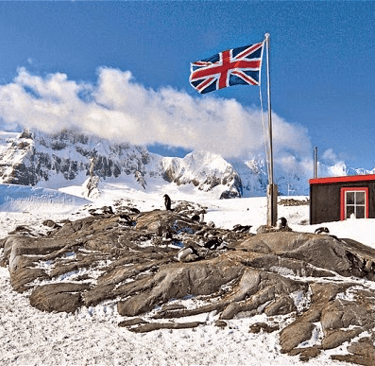British Antarctic Territory: Home to the most dangerous conditions on Earth
From the smallest, the tiny island of Pitcairn, in the middle of the Pacific Ocean, to the richness of the Cayman Islands in the Caribbean to the dry and windy conditions of the British Antarctic Territory, each territory is unique with its own unique biodiversity and climate, boasting some of the hottest and coldest climates in the world.
NEWS FROM THE OVERSEAS TERRITORIESRESEARCHBRITISH ANTARCTIC TERRITORY
The United Kingdom’s Overseas territories span the four corners of the world, and a vast range of cultures, environments and climates. From the smallest, the tiny island of Pitcairn, in the middle of the Pacific Ocean, to the richness of the Cayman Islands in the Caribbean to the dry and windy conditions of the British Antarctic Territory, each territory is unique with its own unique biodiversity and climate, boasting some of the hottest and coldest climates in the world. Collectively, the Territories encompass a population of around 250,000 people and a land mass of about 1,727,570 square kilometres. While Bermuda accounts for almost a quarter of the total BOT population, situated at the other end of the scale are three unique territories which have no civilian population: the Antarctic territory, the British Indian Ocean Territory and South Georgia. While the smallest land area is Gibraltar on the southern tip of the Iberian Peninsula, Antarctica is so vast that it accounts for most of British Overseas Territory with a land mass of over 1,700,000 square kilometres. While 250,000 people are proud to call their home British, Antarctica is the only area which has never been permanently inhabited.
British Antarctic Territory is the only area in the world which has never been inhabited with its harsh climate making it impossible for humans to survive. With temperatures routinely dipping to -50 C it doesn’t come as a surprise that those who have visited have risked their lives. A number of nations large and small played important roles in the discovery and exploration of Antarctica, with Ernest Shackleton’s expedition proving crucial to these efforts. During the “heroic era” of Antarctic exploration, great advances were not just made in advancing geographic but furthering scientific knowledge. Ernest Shackleton led three expeditions between 1901 and 1913 and it is now over 100 years since the Imperial Trans Antarctica expedition was made. The goal was ambitious considering that only 10 men had ever stood at the South Pole and 5 of those had died on the return journey. In 1914, Shackleton was on his third and final expedition and faced conditions so severe, his ship and all its crew, the Endurance, was left stranded in Weddell Sea pack ice for an entire year. Shackleton’s expeditions pushed human endurance to its limits, and it was more than 40 years later before the first crossing of the Antarctic was achieved by the Commonwealth Trans-Antarctic Expedition in 1955.
Since, the “heroic” era of exploration, Britain has remained at the forefront of efforts to protect the Antarctic continent. Britain is one of six countries which currently occupies the continent; retaining access for the essential purposes of scientific research and environmental conservation. Antarctica is uniquely governed by the Environment Protocol, the only international agreement designed to protect an entire continent. This is important in ensuring that all human activity in Antarctica is carefully monitored and controlled, to protect against nuclear testing, waste disposal and commercial mining. Sir Alan Duncan gave a speech in 2016, recognising the significance of our efforts in the protection and conservation of the Antarctic arguing that “while the French and Australians previously rejected the Convention on mineral exploitation, it was the UK that stepped into one of the lead roles in drafting the Protocol”.
It is without doubt that Antarctica is special and is the largest region in the world to be governed by an internationally agreed protocol ratified by 53 countries. The continent is governed by numerous treaties which are crucial in preventing environmental exploitation, making the region an essential hub for scientific research and experiment. The UK continues to be at the forefront of the Antarctic Treaty System through the contribution made to scientific research and the work of British Antarctic Survey and the Polar Regions APPG. This is only strengthened by the existence of two permanently staffed scientific research stations run by the British Antarctic Survey in Halley and Rothera.
Today Antarctica is facing challenging times, but Britain must remain at the forefront of continuing efforts to conserve its unparalleled environment and we must continue to protect its unique status. The work of the British Antarctic Survey and the Polar Regions APPG is essential and we must remain ever mindful of the continuing pressures it faces as climate change takes hold and the pressure for mineral exploitation expands.


